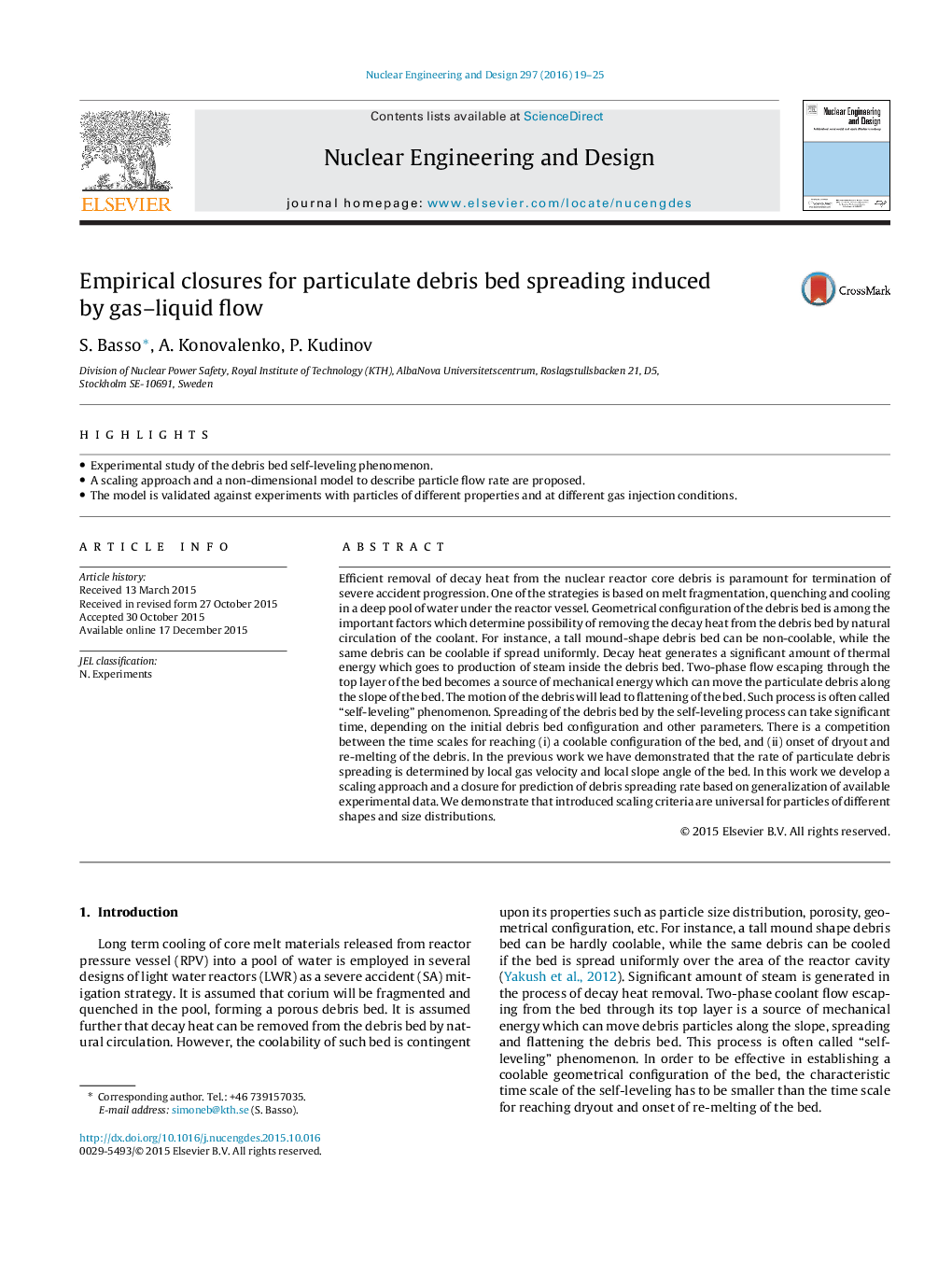| کد مقاله | کد نشریه | سال انتشار | مقاله انگلیسی | نسخه تمام متن |
|---|---|---|---|---|
| 296073 | 511704 | 2016 | 7 صفحه PDF | دانلود رایگان |
• Experimental study of the debris bed self-leveling phenomenon.
• A scaling approach and a non-dimensional model to describe particle flow rate are proposed.
• The model is validated against experiments with particles of different properties and at different gas injection conditions.
Efficient removal of decay heat from the nuclear reactor core debris is paramount for termination of severe accident progression. One of the strategies is based on melt fragmentation, quenching and cooling in a deep pool of water under the reactor vessel. Geometrical configuration of the debris bed is among the important factors which determine possibility of removing the decay heat from the debris bed by natural circulation of the coolant. For instance, a tall mound-shape debris bed can be non-coolable, while the same debris can be coolable if spread uniformly. Decay heat generates a significant amount of thermal energy which goes to production of steam inside the debris bed. Two-phase flow escaping through the top layer of the bed becomes a source of mechanical energy which can move the particulate debris along the slope of the bed. The motion of the debris will lead to flattening of the bed. Such process is often called “self-leveling” phenomenon. Spreading of the debris bed by the self-leveling process can take significant time, depending on the initial debris bed configuration and other parameters. There is a competition between the time scales for reaching (i) a coolable configuration of the bed, and (ii) onset of dryout and re-melting of the debris. In the previous work we have demonstrated that the rate of particulate debris spreading is determined by local gas velocity and local slope angle of the bed. In this work we develop a scaling approach and a closure for prediction of debris spreading rate based on generalization of available experimental data. We demonstrate that introduced scaling criteria are universal for particles of different shapes and size distributions.
Journal: Nuclear Engineering and Design - Volume 297, February 2016, Pages 19–25
